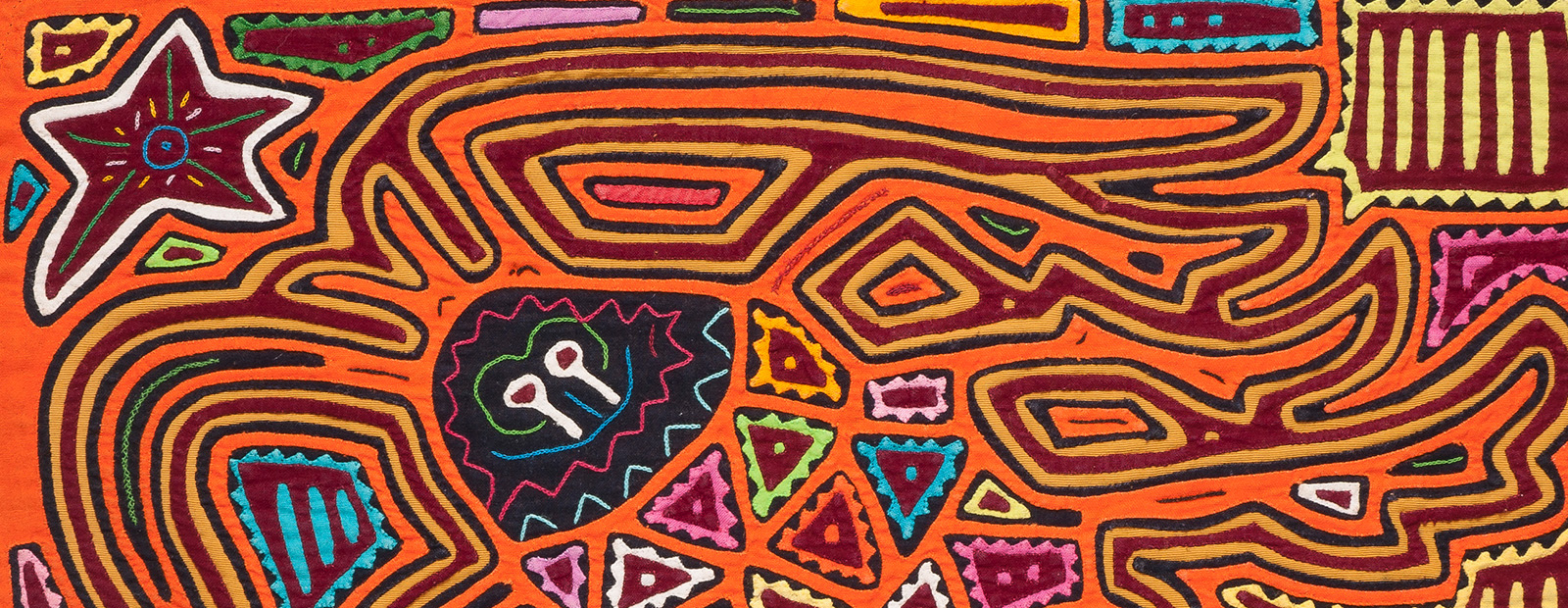Dulemolas, commonly known as molas, can be understood as artistic testaments to resiliency and adaptation. Created by Guna women on the northern coast of Panama, these colorful cutwork pieces embody both tradition and innovation.
When the Spanish colonized the region, missionaries required that Guna women adopt European standards of modesty by wearing blouses. The women responded by creating an entirely new type of blouse that combined the gathered sleeves and yokes of European blouses with colorful “cut-work” panels forming the fronts and backs.
To create these panels, layers of colored cloth are pierced in myriad designs and patterns, revealing the colors underneath. Such a blouse, and the cutwork panel itself, is known in the Guna language as a dulemola. Many of the cutwork patterns are inspired by the traditional bodypainting designs the blouses were meant to cover.
Guna women artists are inspired by the natural world in which they live, a paradise of hundreds of small islands surrounded by turquoise waters known as the “San Blas” islands. The northern coast of mainland Panama adds a long strip of verdant land to Guna Yala, or Gunaland. These two areas include a remarkable array of land and water animal and plant life, much of which is reflected in the imagery of their artwork.
We've created a puzzle from an image of a dulemola that depicts a spiny lobster.
Click here to see the complete dulemola.
Note the following as you complete the puzzle:
- The Guna free dive down as far as eighty feet to catch the Caribbean spiny or rock lobster. Notice the ways the artist has captured the actual appearance of this warm-water crustacean.
- The bright orange cloth reflects the animal’s actual color.
- The serrated edges on the triangles in the main body are particularly creative depictions of the spiky dots that cover the animal's body. This type of edge is challenging to make and indicates the hand of a skilled textile artist.
- The lozenge shapes accurately convey the segmented lower body.
- The spiny lobster has particularly long, wavy antennae.





